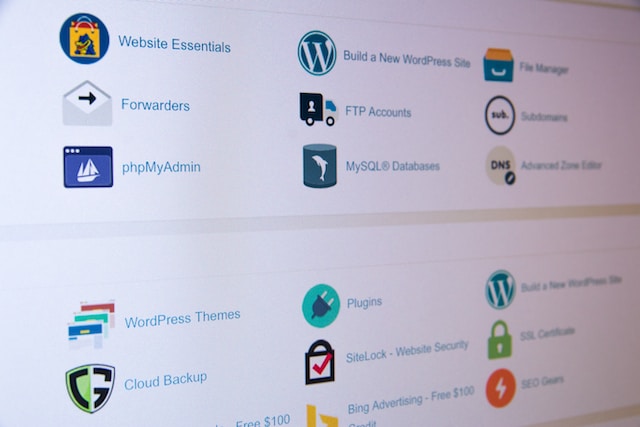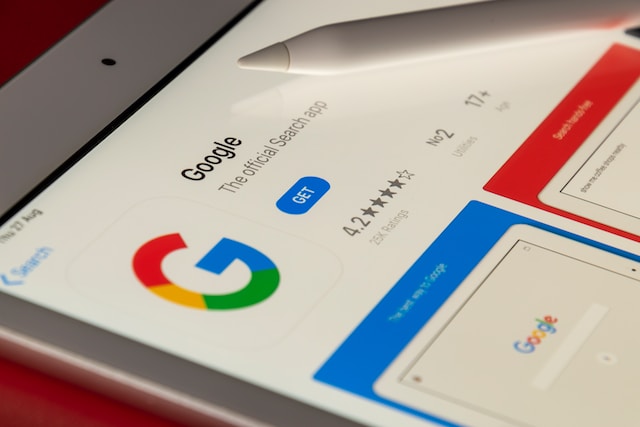Want to be a full-time traveller? Do you love sharing about your travel experiences? Simply love guiding people about different destinations? You are at the right place! In today’s digital age, travel blogging has become a popular way for adventure enthusiasts and wanderlusters to document their journeys and share their experiences with a global audience. But what exactly is travel blogging? Let’s dive deep 😉
NOTE: I am not going to share the copy-pasted content from AI or the web. I’ll explain how I did it. I will offer my personal experience, knowledge, and the road I took.
Understanding Travel Blogging
1.1 What is a Travel Blog?

A travel blog is an online platform where individuals or groups share their travel experiences, insights, recommendations, and stories with a global audience. It serves as a digital journal that allows travel enthusiasts to document their journeys and provide valuable information to fellow travellers.
Travel blogs typically consist of written content, accompanied by captivating photographs and sometimes videos. They offer a personal perspective on destinations, providing readers with authentic and firsthand accounts of travel experiences. From highlighting must-visit attractions and hidden gems to sharing practical tips and advice, travel blogs aim to inspire, educate, and entertain readers who are planning their adventures.
Overall, a travel blog is a powerful tool for both bloggers and readers. It allows bloggers to showcase their adventures, express their creativity, and share their knowledge while providing readers with inspiration, guidance, and a virtual window to the world of travel. Whether seeking information, entertainment, or motivation, travel blogs serve as a valuable resource for anyone with a wanderlust-filled soul.
To know more about a travel blog and its types in details, check out What is travel blog now!
1.2 Why Start a Travel Blog?

Travel blogging can be a thrilling and enriching experience, offering unique opportunities and benefits. I had three reasons to start this blog. One was my love for writing, the urge to share my travel experiences and aim to be a full-time traveller.
Reasons Why You Should Consider Starting a Travel Blog
- Building an Online Presence: A travel blog can help you establish an online presence and create a personal brand. Your blog serves as a showcase of your travel expertise, writing skills, and photography/videography abilities.
- Door to Professional Opportunities: Creating a travel blog can open doors to exciting professional opportunities. Partnerships with tourist boards, collaborations with travel businesses, freelance writing assignments, public speaking engagements, and even career transitions within the tourism industry are all possibilities.
- Documenting and Sharing Your Adventures: Travel blogging allows you to document your travel experiences, capturing precious moments, memories, and stories. It serves as a digital journal where you can share your adventures with friends, family, and a global audience.
- Inspiring and Helping Others: A travel blog allows you to inspire and help others in their travel endeavours. Your stories, itineraries, and recommendations can be valuable resources for fellow travellers. You can offer practical tips, share local insights, and guide planning, budgeting, and navigating different destinations.
- Monetization Possibilities: While not the primary focus for every travel blogger, various monetisation avenues are available. Through advertising, sponsored content, affiliate marketing, or selling digital products like travel guides or photography prints, you can potentially earn income from your travel blog.
Check out more benefits associated with starting a travel blog!
1.3 Different Types of Travel Blogs
Travel blogs have several types, appealing to a wide range of interests and audiences. The following are some popular types of travel blogs:
- Personal Travel Blogs
- Destination-focused Blogs
- Adventure Travel Blogs
- Budget Travel Blogs
- Luxury Travel Blogs
- Food and Travel Blogs
Get to know about these types and other types of travel blogs in details in Types of Travel Blog!
Start Travel Blogging
2.1 Choosing a Niche and Domain Name

Get to Know Niche
In blogging, a niche refers to the specific topic or subject area that a blog focuses on. It is the main theme or subject that the blog consistently covers in its content. Choosing a niche is an essential aspect of creating a successful blog because it helps define the target audience, sets the tone and purpose of the blog, and attracts like-minded readers who are interested in that particular topic.
Niche can be travel, food, makeup, or fashion. You are learning travel blogging so your broad niche is “travel”. Your micro niche can be types of travel blogging like adventure travel, budget-friendly travel, luxury travel, etc.
What is a Domain?
The main domain is the primary part of the website’s address. It identifies the website’s name and is typically followed by a top-level domain (TLD) representing its purpose or origin. Examples of TLDs include “.com,” “.org,” “.net,” “.edu,” “.gov,” and many more. For example, www.travellingortraveling.com OR www.example.com.
Choosing a good domain name is important as it can impact the website’s branding, visibility, and search engine optimization (SEO). A memorable and relevant domain name can make it easier for users to remember and find your website. Additionally, it’s essential to consider the availability of your desired domain name since many popular names may already be registered by other website owners.
2.2 Setting up Hosting

Website hosting refers to the service of storing and making a website accessible on the internet. When you create a website, all the files, data, images, and associated content must be stored on a server. Web hosting companies provide these servers and the necessary technologies to ensure your website is available to visitors around the world.
When someone enters your website’s domain name into their web browser, the browser sends a request to the web hosting server, and the server responds by delivering the website’s files back to the user’s browser. This allows visitors to view your website and interact with its content.
There are several web hosting companies, such as:
2.3 Ways to Do Travel Blogging

There are several ways to create a blog, depending on your technical skills, budget, and specific requirements. Here are some popular methods:
- Website Builders: Website builders are user-friendly platforms that allow you to create a website or blog without any coding knowledge. They often offer drag-and-drop interfaces and pre-designed templates. Examples include Wix, Squarespace, and Weebly.
- Content Management Systems (CMS): CMS platforms provide more flexibility and are suitable for beginners and experienced users. WordPress is the most popular CMS, powering a significant portion of the internet. It allows you to create and manage content easily. For eg, www.travellingortraveling.com (it’s on WordPress)
- HTML/CSS Coding: If you have web development skills or want complete control over your website’s design, you can create it from scratch using HTML, CSS, and optionally JavaScript.
- Hiring a Web Developer: If you have specific requirements or lack technical expertise, you can hire a professional web developer or a web development agency to build your website or blog for you.
- Blogging Platforms: For simple blogs, you can use platforms like Blogger, Tumblr, or Medium, which are specifically designed for blogging and don’t require advanced technical knowledge.
2.4 Designing Your Blog
- Logo and Branding
- User-Friendly Navigation
- Responsive Design
- Engaging Visuals
Increasing Traffic to Your Travel Blog
4.1 Search Engine Optimization (SEO)

Search Engine Optimization (SEO) is a digital marketing strategy aimed at improving a website’s visibility and ranking on search engine results pages (SERPs). The primary goal of SEO is to increase organic (non-paid) traffic to a website by making it more relevant and attractive to search engines like Google, Bing, or Yahoo.
Travel blogging gets easier if you know about these technical things beforehand. I got to know about all these things after getting into travel blogging. You won’t believe me when I say that I did an internship in social media and began learning SEO. I was also learning digital marketing in order to improve my blogging skills. Now, I don’t want you to face the same challenges, which is why I’m here to share as much helpful info as I can 😀
Key Components of Search Engine Optimization
- Keyword Research: Identifying relevant keywords and phrases that users are likely to use when searching for products, services, or information related to a website’s content. Keyword research helps in optimizing website content around these keywords to attract targeted traffic.
- On-Page SEO: This involves optimizing individual web pages to make them search-engine friendly. This includes using target keywords in page titles, meta descriptions, headers, and content, as well as optimizing URL structures, image alt tags, and internal linking.
- Off-Page SEO: Off-page SEO refers to strategies implemented outside the website to improve its visibility and authority. This includes link building, which involves getting other reputable websites to link back to your site, indicating its credibility and relevance.
- Technical SEO: Technical SEO focuses on optimizing the website’s technical aspects to improve its crawlability and indexability by search engines. This includes optimizing website speed, fixing broken links, implementing XML sitemaps, and ensuring proper website structure.
- User Experience (UX): Search engines consider user experience as an important ranking factor. Websites that provide a positive user experience, such as fast-loading pages, mobile-friendliness, and easy navigation, are more likely to rank higher in search results.
- Content Creation: Creating high-quality, relevant, and engaging content is crucial for SEO success. Search engines value fresh and informative content that meets users’ search intent.
- Local SEO: For businesses with physical locations, local SEO focuses on optimizing the website to rank well in local search results. This includes setting up and optimizing Google My Business listings, local citations, and customer reviews.
- Analytics and Monitoring: Regularly monitoring website traffic, rankings, and user behaviour is essential to evaluate the effectiveness of SEO strategies and identify areas for improvement.
Tools for SEO of Your Blog
Keyword research: Ahrefs, Semrush, etc.
Page speed: Google PageSpeed Insights, GTmetrix, Moz, etc.
Plagiarism: SmallSEOTools plagiarism checker, Quetext, Grammarly, etc.
Find competitors: Similarweb, Ahref, Semrush, Moz, Spyfu, etc.
Latest trends: Google Trends
4.2 Social Media Marketing

Social media marketing refers to the use of various social media platforms and networks to promote products, services, or brands. It involves creating and sharing content, engaging with the audience, and running targeted advertisements to increase brand awareness, drive website traffic, and achieve business goals.
How to do Social Media Marketing?
- Building a Social Media Presence
- Creating quality content
- Using Hashtags
- Engaging with Followers
- Influencer Collaborations
Tools for Social Media Marketing
Graphics: Canva, Adobe Express, Pablo (by Buffer), etc.
Copywriting: ChatGPT, Grammarly, Wordtune, ProWritingAid, etc.
Hashtags: best-hashtags.com, Hootsuite, Hashtagify, Ritetag, etc.
Schedulers: Buffer, Hootsuite, SocialBee, etc.
4.3 Email Marketing
- Building an Email List
- Sending Regular Newsletters
- Providing Exclusive Content
4.4 Paid Traffic Generation

Paid traffic generation methods refer to strategies where businesses or individuals pay for advertising to drive visitors to their websites, landing pages, or online content. These methods offer a quick and targeted approach to attracting potential customers, increasing brand visibility, and boosting conversions.
Popular Paid Traffic Generation Methods
- Pay-Per-Click (PPC) Advertising
- Social Media Advertising
- Display Advertising
- Native Advertising
- Video Advertising
- Retargeting/Remarketing
- Influencer Marketing
- Paid Backlink
Monetizing Your Travel Blog
5.1 Affiliate Marketing

Affiliate marketing is a performance-based marketing strategy where businesses, known as advertisers or merchants, partner with individuals or other businesses, known as affiliates or publishers, to promote their products or services. In this arrangement, affiliates earn a commission for each sale, lead, or action generated through their marketing efforts.
How to do Affiliate Marketing?
- Choosing Relevant Affiliate Programs
- Incorporating Affiliate Links
- Maximizing Affiliate Revenue
5.2 Sponsored Content and Brand Collaborations
- Approaching Brands and Tourism Boards
- Negotiating Sponsored Partnerships
- Maintaining Authenticity
5.3 Advertising Networks and Display Ads

Monetizing a blog through ads can be an effective way to generate income. But before you start monetizing your blog with ads, ensure you have a solid foundation of high-quality content. Engaging and valuable content will attract more visitors and keep them coming back for more.
Here are some popular digital advertising networks:
- Google AdSense
Google AdSense is an advertising program by Google that enables website owners and content creators to monetize their online platforms. It displays relevant ads, and publishers earn revenue based on clicks or impressions. AdSense helps to support content development while connecting advertisers with a wide audience across the web.
- Mediavine
Mediavine is a leading digital advertising network that helps content creators and publishers monetize their websites and blogs through premium ad placements. With a focus on user experience and advanced technology, Mediavine maximizes revenue while ensuring a seamless and engaging online experience for audiences worldwide.
- AdThrive
AdThrive is a prominent digital advertising network, specializing in helping content creators and publishers maximize revenue from their websites and blogs. With its advanced technology and expertise, AdThrive optimizes ad placements to deliver higher earnings and a seamless user experience.
5.4 Creating and Selling Digital Products
- E-books
- Online Courses
- Photography or Travel Guides
5.5 Freelance Travel Writing and Photography
- Pitching to Magazines and Websites
- Selling Photos to Stock Agencies
Bottom Line…
Starting a travel blog opens up a world of possibilities. It allows you to share your adventures, connect with like-minded individuals, and potentially earn income from your passion for travel. By understanding the fundamentals of travel blogging, choosing the right platform, implementing effective strategies to drive traffic, and exploring various monetization methods, you can turn your travel blog into a successful online venture.
Read FAQs
Is it easy to start a travel blog?
Let's break it down: First, it's not hard but yes, it requires consistency and passion. Plus, it won't eat up much of your time. Thirdly, it's a budget-friendly venture. But here's the real challenge: turning your travel blog into a moneymaker. Don't worry, though, because there's plenty of potential for success, and the rewards will make it all worth it! So, go for it!
How do I create a free travel blog?
There are several ways to create a blog, depending on your technical skills, budget, and specific requirements. Here are some free and popular methods:
- Website Builders: Website builders are user-friendly platforms that allow you to create a website or blog without any coding knowledge. They often offer drag-and-drop interfaces and pre-designed templates. Examples include Wix, Squarespace, and Weebly.
- Content Management Systems (CMS): CMS platforms provide more flexibility and are suitable for beginners and experienced users. WordPress is the most popular CMS, powering a significant portion of the internet. It allows you to create and manage content easily. For eg, www.travellingortraveling.com (it's on WordPress).
- Blogging Platforms: For simple blogs, you can use platforms like Blogger, Tumblr, or Medium, which are specifically designed for blogging and don't require advanced technical knowledge.
Check out Complete Guide to Travel Blogging: Starting Out to Earning Income for more information!
Where can I create a travel blog?
In this modern tech-savvy era, you have a variety of exciting options to create your blog. It depends on your technical skills, budget, and specific requirements. Here are some popular methods:
1. Website Builders (e.g., Wix, Squarespace, Weebly): User-friendly platforms with drag-and-drop interfaces and pre-designed templates.
2. Content Management Systems (CMS) (e.g., WordPress): Offers flexibility for beginners and experienced users to create and manage content easily.
3. HTML/CSS Coding: Create a website from scratch using web development skills with HTML, CSS, and optionally JavaScript.
4. Hiring a Web Developer: Get professional help to build your website or blog if you lack technical expertise or have specific requirements.
5. Blogging Platforms (e.g., Blogger, Tumblr, Medium): Specifically designed for simple blogs, doesn't require advanced technical knowledge.
Check out Complete Guide to Travel Blogging: Starting Out to Earning Income for more information!

